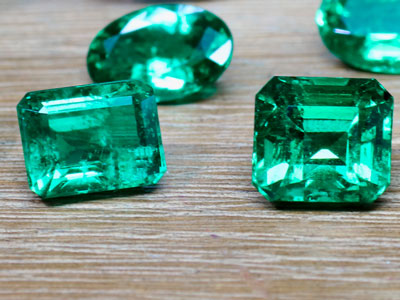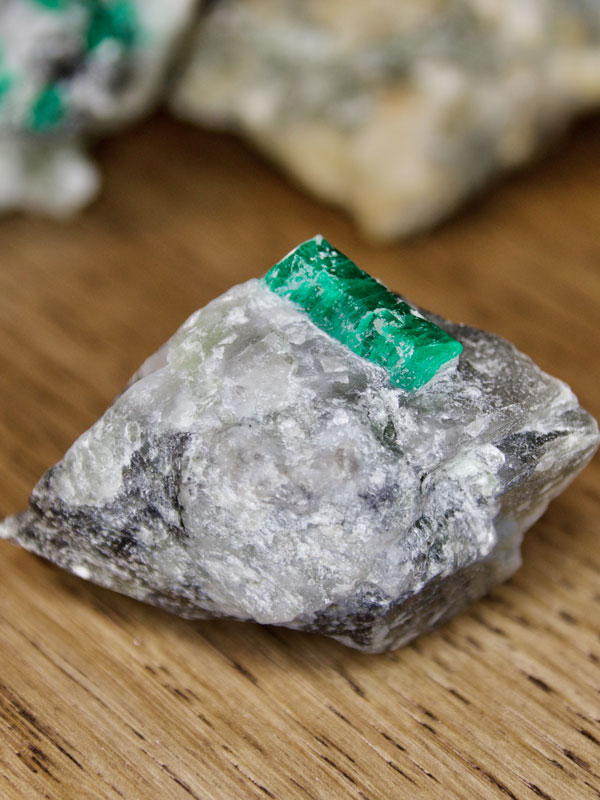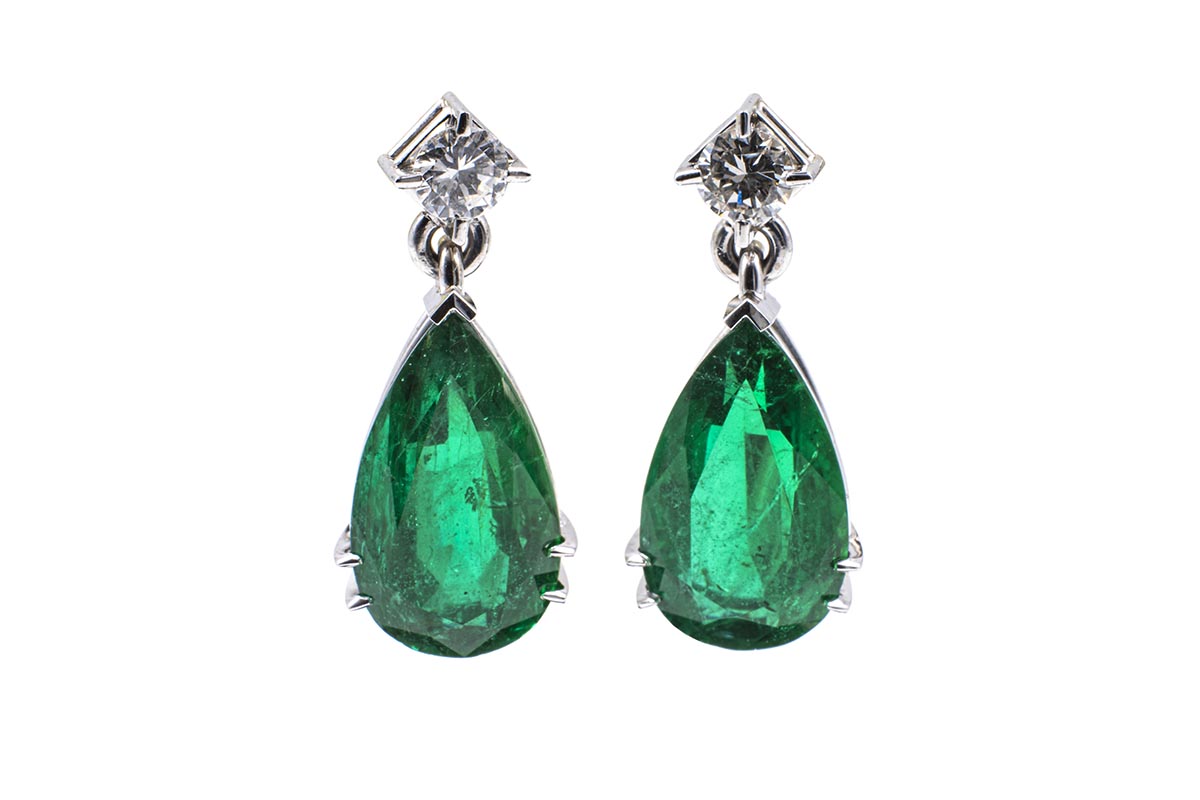Knowledge
09.03.2021 Beryl: More than “just” emerald
From the mineral group of beryl, the emerald is probably best known as a green variety. But also other varieties of the beryl group are in demand as gemstones, as well as investment.
Beryl is a beryllium aluminum silicate with the chemical formula Be3Al2(Si6O18). With a Mohs hardness of 7.5 – 8 it belongs to the harder minerals.
The word “beryl” was used in Sanskrit, in Greek and in Latin. It is the root of the term “brilliant”, which today stands mainly for a cut form of the diamond and is very often also used incorrectly as a synonym for “diamond”.

Different colors give the varieties
As with other gemstone groups, the coloration of a stone determines the exact classification. The different colors of a mineral are caused by different trace elements, which are added during the formation of a gemstone in the earth’s interior.
The green variety of beryl is called emerald, its “sibling stones” with similar chemical properties are aquamarine (light blue), gold beryl or heliodor (yellow), morganite (pink) and goshenite (colorless) as well as “red beryl”.


The origin of beryl

For the formation of beryl it needs an enrichment of the relatively rare element beryllium in the earth’s crust. When beryl is absolutely pure, it is completely colorless (and is called “goshenite”). If certain trace elements are present during formation, the corresponding varieties can form.
The name “emerald” itself is derived from the Greek “smaragdos”, which means “green stone”. This green comes from either chromium or vanadium. With regard to the coloring element there is a dispute in the literature: originally it was said that only beryl colored by chromium is an emerald, then it was found out that emerald from Colombia also contains vanadium; today experts philosophize about whether beryl colored by iron is a beryl or an emerald.
Altogether beryllium is very rare on earth. Chromium and vanadium are also very rare. That beryllium occurs together with chrome and/or vanadium is therefore even rarer. In addition, geologically and mineralogically the growth conditions for emerald are very turbulent, hence the relatively many cracks and inclusions in the stone itself.
The chromium content in the stone can reach up to a few percent, and this can result in color gradations in emerald from grassy and light green to bright to strong but dull green.
Incidentally, depending on where it was found, the specific gravity as well as the light refraction of the emerald varies. Based on these two factors as well as on the inclusions, the origin of an emerald can be determined relatively easily.

Other varieties of corundum
Besides the emerald as a green variety of beryl, the aquamarine is probably also known to many as a blue variety.
Aquamarine gets its bluish, partly blue-green hue from admixed iron ions. Also the name refers to the clay of sea water, Latin “aqua marina”. Unlike emerald, aquamarine is a relatively common variety of beryl.
Yellow gold beryl, also known as helidor, also gets its coloration when parts of the aluminum in the crystal lattice are replaced by trivalent iron. Its coloration ranges from a delicate light yellow to rich golden yellow to a yellowish green.
Red beryl, formerly usually called “bixbit”, more rarely red emerald, is the red variety of beryl.
The reddish coloration – it reaches from pink over orange to dark red – gets the red beryl, if parts of the aluminum in the crystal lattice are replaced by manganese. Red beryl is the rarest variety of beryl, which makes it interesting as an investment stone. The most sought-after color is a rich red called “stoplight”.
Also with the Morganite manganese is the color-giving trace element. The color of the variety also called “rose beryl” is always pink, which can range from an almost colorless pink to light violet.
If the beryl lacks the color-giving atoms, the colorless variety of the mineral is present, which is also called goshenite. Because this variety is relatively unknown, goshenite is offered in the trade also as white aquamarine or white beryl.


Synthetic production of corundum
It is possible to distinguish between natural and synthetic beryl in the laboratory.
The first work on the synthesis of beryl and thus of emerald was carried out as early as 1848, 1880 and 1900.
The basic materials beryllium, aluminum and silicon oxides are melted and crystallized – with or without pressure, depending on the process.
Natural emerald also always contains water, syntheses by the flux process are completely water-free, those by the hydrothermal process contain water with properties different from naturally enclosed water. Therefore, the distinction “nature” and “synthesis” is possible in the laboratory.

Beryl usage

Beryl is primarily processed as a jewelry stone. While emerald and aquamarine are mostly cut in the classic emerald cut, gold beryl, red beryl or morganite can also be found in round and oval cuts or in drop shape.
As one of the “big 4 gemstones”, emerald is a classic investment stone. But aquamarine has also experienced significant price increases in recent years.
Red beryl is in great demand, beautiful stones in the color “stoplight” with over 1 carat achieve high prices.
Like most gemstones, the various varieties of beryl are also said to have certain powers in esotericism, so that gemstones from the beryl group are also sold as healing stones.

